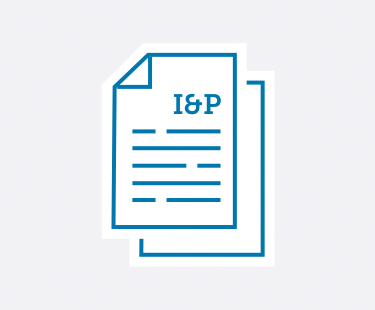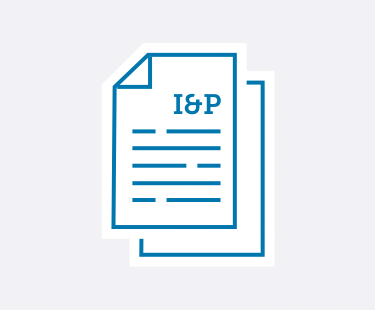

Learn practical strategies to handle emerging trends and leadership challenges in private schools.
No matter if you’re a School Head, Admission Director, Development Director, Board member, or any other private school administrator—Ideas & Perspectives®, ISM’s premier private school publication, has strategic solutions for the pervasive problems you face.
- Tuition not keeping pace with your expenses? In I&P, explore how to use strategic financial planning to create your budget and appropriately adjust your tuition.
- Enrollment dropping off? Discover how to implement the right admission and enrollment management strategies that engage your community—and fill your classrooms.
- Trouble retaining teachers? Learn how you can best support your teachers using ISM’s Comprehensive Faculty Development framework. Your faculty members will become more enthusiastic about their roles—which ultimately improves student outcomes.
- Fundraising campaigns not as successful as you’d hoped? Implement ISM’s practical advice and guidance to build a thriving annual fund, construct an effective capital campaign, and secure major donors—no matter your community size or location.
- Not sure how to provide professional development—for you and your staff? Learn ways to develop and fund a successful professional development strategy. You can improve teacher-centered satisfaction and growth, which in turn strengthens student-centered learning.
- Problematic schedule? You can master the challenges of scheduling with the help of ISM’s practical advice, based on our experience with hundreds of schools and our time-tested theories.
- And so much more.
I&P has shared targeted research, up-to-date insight, and sound theory with school leaders since 1975. More than 8,500 private school decision-makers find the answers to their schools’ administrative and governance matters in our advisory letter. We give you the strategic answers you need.
As an ISM Silver or Gold member, you not only receive issues online and in print 10 times a year, but you have access to 900+ articles in our web archive. Need help? It’s at your fingertips! Learn more and sign up for ISM's membership here.
Search
See the articles from our latest issue of Ideas & Perspectives.
The Head’s Five Major Priorities
Volume 35 No. 16 // December 14, 2010
The extent and (perceived) urgency of the daily demands on you, the School Head, could easily render the job impossible without a reliable sense on your part of the validity of the priorities you hold. Institutional success, personal/professional success, and an actual sense of joy in the role can all be within plausible reach if your priorities are “right,” and provided:
1. Already a member? Click here to login.
2. Not a member? Click here to become a member.
3. Not sure? We'll help you figure it out.
Moonlighting: What to Do When Part-Time Jobs Clash With School Culture
Volume 35 No. 15 // November 22, 2010
Issue: A faculty member devotes a significant amount of his off-duty time and energy as an online writer for a controversial social cause that some feel is contrary to the culture of the school. Issue: A faculty member’s role as an instructor of adult education classes on pole dancing at the local community college comes to the attention of parents, who contact the School Head to express their concerns.
1. Already a member? Click here to login.
2. Not a member? Click here to become a member.
3. Not sure? We'll help you figure it out.
The Real Cost of Financial Aid
Volume 35 No. 15 // November 22, 2010
There is much concern, at the Board and management level, over the increasing cost of financial aid.* Yearly, it seems, this budget line item (whether you recognize it as contra revenue or an expense) increases. But an increase in that line item does not necessarily mean the financial aid is costing your school more. A better way to think about the true cost of financial aid is to understand the concept of net tuition revenue per student.
1. Already a member? Click here to login.
2. Not a member? Click here to become a member.
3. Not sure? We'll help you figure it out.
The 21st Century School: Strategic Schedule Review
Volume 35 No. 15 // November 22, 2010
Schedule reform is becoming one of the most important and adaptive strategies that academic administrators can lead and support—it has the capacity to shift student and faculty cultures in a dramatic and immediate way. ISM has always called for the schedule to be re-examined every eight years, but recently suggested that, with the increased strategic importance of the schedule, School Heads “require, fully engage in, and support schedule review every four years and have a standing faculty committee that continues to review the ongoing research and practice in schedule, student performance, and healthy faculty cultures.”1
1. Already a member? Click here to login.
2. Not a member? Click here to become a member.
3. Not sure? We'll help you figure it out.
Assessing Your School’s Internal Marketing
Volume 35 No. 14 // November 4, 2010
One of the second-tier markers of the ISM Stability Markers™ is to have mature and effective internal marketing strategies.1 The value of effective internal marketing is accepted by all in independent schools. Satisfied families will re-enroll their children year after year because the school has validated for them the quality and mission fit of the education their children are receiving. In addition, informed parents provide an independent school with an excellent “sales force” to spread the word about the school to potential families.
1. Already a member? Click here to login.
2. Not a member? Click here to become a member.
3. Not sure? We'll help you figure it out.
Developing Your Business Continuation Plan
Volume 35 No. 14 // November 4, 2010
More and more, government agencies, businesses your school deals with, parents, and major donors are asking to see your business continuation plan (BCP)—or at least questioning if you have such a plan. The BCP, simply stated, answers the question: “How can our school remain in business—or re-open as quickly as possible—if a crisis or catastrophe forces us to close our campus?” Without a business continuation plan, your school could face business interruption, which can lead to lost income, damaged reputation, added expense, and, if serious enough, the closing of your school.
1. Already a member? Click here to login.
2. Not a member? Click here to become a member.
3. Not sure? We'll help you figure it out.
External Marketing for Your Summer Program
Volume 35 No. 13 // October 13, 2010
Recently, I&P published an article about internal marketing for your summer program. The following article shares effective ideas for external marketing of your program. The targets of your external marketing are families who have not enrolled students in your summer program in the last two years—whether the students are enrolled in your school during the academic year or not.
1. Already a member? Click here to login.
2. Not a member? Click here to become a member.
3. Not sure? We'll help you figure it out.
The Head Support and Evaluation Committee: Subtleties
Volume 35 No. 13 // October 13, 2010
ISM has written extensively on the subject of the Head Support and Evaluation Committee (HSEC), including an article that provided a lengthy checklist. But the nuances of this committee’s functions can escape even the longest lists, and ISM here provides further commentary and examples on this critical topic. The HSEC serves as the linking unit between governance and operations. Its composition, thus, should include a small number—often two or three—of management-savvy individuals,1 each of whom (a) has the institution’s long-term, mission-specific success as her/his only agenda, coming into the role; (b) has no predetermined (other) special agendas, no axes to grind, no hearsay-based “fixes” to impose on the School Head; and (c) has a dispassionate relationship with the Head (not too close, and certainly not adversarial).
1. Already a member? Click here to login.
2. Not a member? Click here to become a member.
3. Not sure? We'll help you figure it out.
Paid Leave Banks: Compassionate or Risky?
Volume 35 No. 13 // October 13, 2010
Paid time off (e.g., sick, vacation, personal time) is an important element of a school’s overall compensation and benefits program.1 As a robust employee benefits and compensation program is one of ISM’s Stability Markers®, ISM encourages schools to be as generous in this area as financially possible. However, some schools extend this generosity in the form of paid leave “banks” in a way that creates risk for the school. This article examines those risks and proposes alternate paths to reach the same desired end—that is, attending to employee needs in a way that is compassionate but also significantly less risky.
1. Already a member? Click here to login.
2. Not a member? Click here to become a member.
3. Not sure? We'll help you figure it out.
Does Your Crisis Plan Really Protect Your Students (and School)?
Volume 35 No. 12 // September 23, 2010
Recently, ISM had the privilege of sharing some of its risk management ideas with over 100 school administrators. In our discussions, it quickly became clear that many well-intentioned schools have neither a comprehensive crisis plan nor a business continuation plan. The former is required by law in some states (and represents good stewardship and the “right thing to do”); the latter, simply good business practice. This I&P article outlines an appropriate crisis plan for private-independent schools. A future article will target the business continuation plan.
1. Already a member? Click here to login.
2. Not a member? Click here to become a member.
3. Not sure? We'll help you figure it out.


